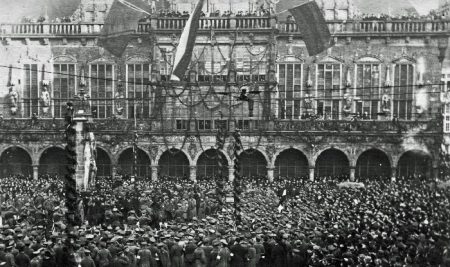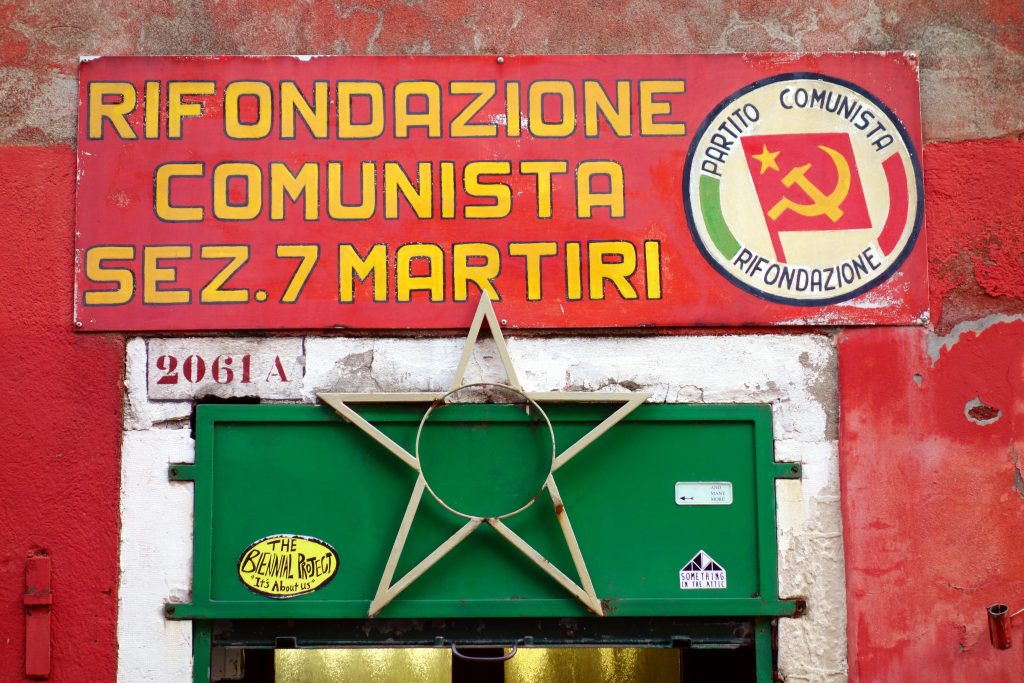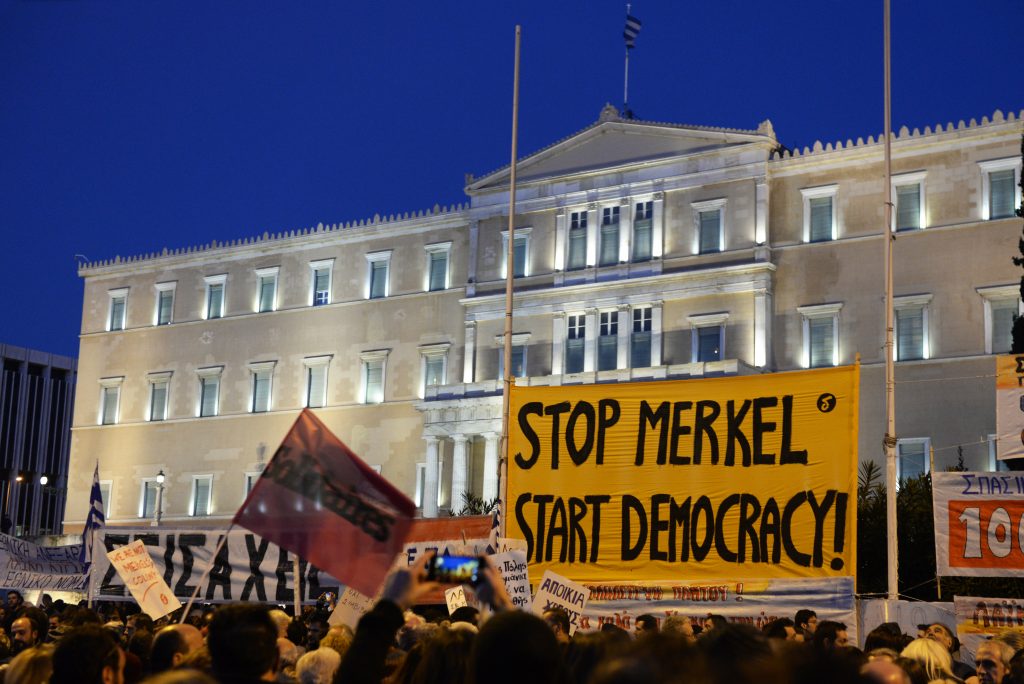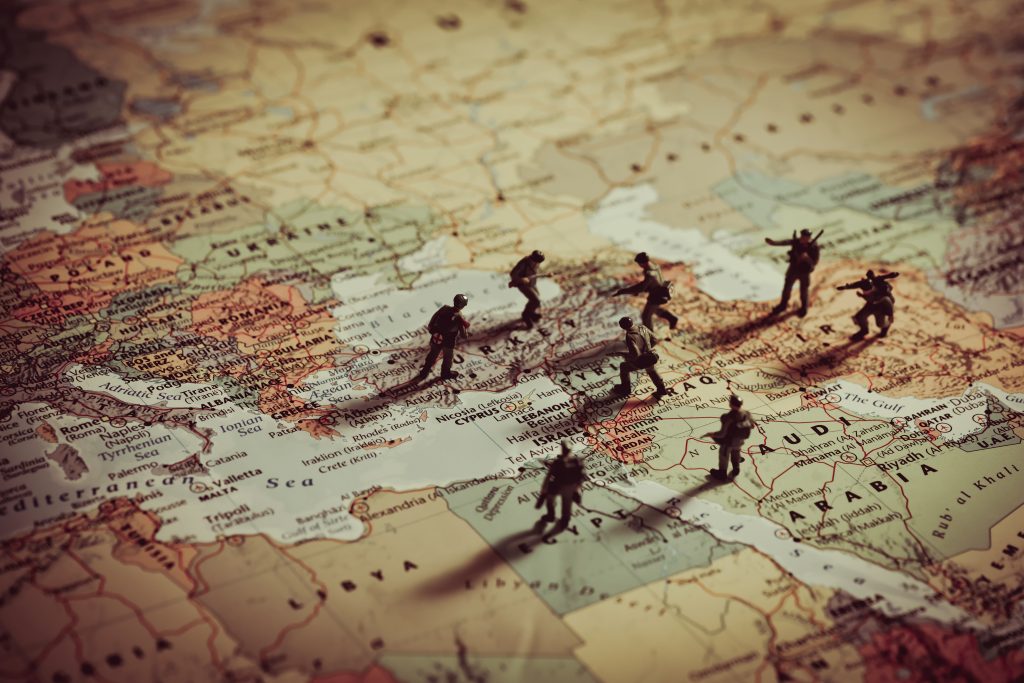
It’s time to face a harsh reality: the far-right in Ireland is likely to make an electoral breakthrough in the next few years. The recent upsurge in anti-immigrant street activity, the strength of the far-right presence on social media and the propensity of some parts of the “mainstream” media to amplify far right Ireland’s messages, indicate that this could happen sooner rather than later. Ireland’s exceptional position as one of the few European states without far-right electoral representation, could be on the cusp of ending. This article will outline three possible scenarios for a far-right breakthrough: the growth of an existing far-right organisation; the emergence of a new right-authoritarian party; or the transformation of one of the “centre-right” parties into a right-authoritarian party.
The scope of this article is limited to the narrow issue of electoral breakthrough so crucial questions which must be addressed by any serious left analysis of the far-right will not be covered. The term “far-right” is understood here as a reactionary, anti-democratic, movement, hostile to all processes and organisations that advance freedom from oppression and exploitation. It covers a continuum from classic fascism through right-authoritarianism and on into the fringes of conservatism.
An important component of any serious analysis of the far-right is the class background of its activists, supporters and (potential) voters. Since no detailed studies have, to date, been carried out on the social composition of the far-right in Ireland, we are reliant on anecdotal accounts and media reports. Briefly, as well as the classic base of disaffected sections of the petit-bourgeois, the far-right in Ireland seems to have made small inroads into working-class communities, though it must be stressed that, based on the numbers mobilised in anti-immigrant protests, this is a tiny minority and we should note the significant response from within those communities mainly in the form of the “X for All” groups. At the other end of the spectrum, the Irish far-right does not have the support of any significant section of the capitalist class but, as will be outlined below, it has potential to gain such support.
Far-Right Ireland Increases Activity
The upsurge in far-right activity, particularly the anti-immigrant protests, make it likely that some form of far-right grouping will make an electoral breakthrough in the next few years. While the increase in immigration and the lockdowns before that, have provided the far-right with “break-out” opportunities, the fundamental cause of the rise of the far-right is the crisis that has enveloped capitalism since 2008 and ramifications for Irish society, especially in the form of the housing crisis which successive centrist/centre-right governments have failed to deal with. We should be wary of simplistic interpretations which posit the increase in numbers of refugees as the primary cause of the rise of the far-right – what has changed is the opportunity to exploit this sentiment using the interaction between the increase in refugees and the housing crisis.

Looking into the near future, the possibility that a Sinn Féin-led government would fail to deliver on its promise of radical change could also open up a large gap for the far-right to capitalise on. Understandably, given the desultory record of the far-right in recent elections, many have been lulled into a false sense of security, with most political commentators focussed on the prospects of a Sinn Féin-led government, fearfully exercised in the case of the conservatives and centrists, tentatively positive in the case of the liberals, seemingly oblivious to the possibility of a far-right breakthrough. Even the radical left, who have correctly focused on combating the far-right in the communities where footholds are being forged, does not yet seem to take seriously the real danger of an electoral advance.
Fascist Transinn Féinormation
The first potential breakthrough scenario is the gradual transformation of an existing fascist organisation, such as the National Party or one of the plethora of overlapping rightist micro-groups, into an electorally successful party that might then morph into a major right-authoritarian party, in the manner of the National Front in France. However, this is the scenario that is the least likely to occur, for a number of reasons. Ireland does not have much of an explicit fascist tradition, despite the brief rise of the Blueshirts in the 1930s and Ailtirí na hAiseirighe in the 40s. The absence of a significant far-right movement in Ireland was largely due to the late modernisation of Irish society. This meant that the “natural” far-right space in the political spectrum was occupied by the FF/FG alliance with the Catholic Church but also, in later years, because Sinn Féin held a monopoly on radical nationalism which made it difficult for the far-right to wrap themselves in the tricolour. The lack of any numerically large ethnic minorities made it difficult for fascists to use competition over relative privilege as a mobilising tool and FF/FG politicians were able to monopolise local outbreaks of anti-Traveller activities, despite the generalised anti-Traveller racism in Irish society.
The eccentric nature of current far-right figures also acts as a barrier to voters, even those with whom the messages might resonate – the ridiculous legal antics of the likes of Gemma O’Doherty only serve to discredit rightist ideas. The current crop of organised Irish rightists still seems too “fringe” to make an electoral breakthrough – it’s hard to imagine Justin Barrett as a Georgia Meloni. However, in the context of Ireland’s small-party-friendly PR-STV electoral system, it’s not beyond the realms of possibility that, given their key role in anti-lockdown and anti-immigrant street activism, the fascists could win a few council seats, even if they retain the clownish leaders and incompetent cadres reminiscent of the British far-right. But minor success on the electoral scene of an unreconstructed fascist grouping such as the National Party, would still leave them facing serious obstacles to further growth in the guise of a generally hostile media and little or no support from any section of the capitalist class, which could only be overcome by at least partial sanitisation of overt fascist rhetoric and an attempt to distance themselves from street violence.
Far Right Ireland: Pop-Up Populism
A much more likely prospect is the emergence of a new, populist, right-authoritarian party based on a maverick personality, an Irish Trump. There is plenty of potential material for this type of leader: a Healy-Rae style rural independent TD, an opportunistic defecting FG/FF politician, a “shock-jock” media personality, a charismatic business owner etc. The European precedent is well established – Gert Wilders in the Netherlands, Nigel Farage in the UK etc. If anyone doubts the potential for such a maverick-led right-authoritarian formation, they should recall the 23% that a right-wing and openly racist businessman, Peter Casey, got in the last presidential election. Because such a maverick character is unlikely to arise from an existing far-right organisation, it would create more distance from the taint of fascism – allowing them to build on the claim to articulate “common-sense” rather than relying on the traditional language of the far-right. Nor should we envisage that such a figure would have to emerge suddenly from outside the political establishment: Ireland has its fair-share of right-leaning independent TDs/Senators, so it’s not a big jump to envisage such a character opportunistically launching a right-populist party. The current vogue for “rural rights” parties (perhaps modelled on the recent spectacular emergence of a right-wing Dutch “farmers” party) might be a starting point which would have the ability of rallying not just famers and their families but rural workers and the small business class of rural towns, united by a common rural vs urban, anti-animal rights, anti-environmentalist discourse. Whatever its origins, such a maverick-led right populist party would be much more likely to get some business backing and media support given its distance from the existing fascist groups.
The Orbán Scenario
The final scenario is the least likely one, though given the experience in Hungary and elsewhere, it cannot be altogether discounted: the transformation of a mainstream centre-right party into a right-authoritarian outfit. Given the loss of hegemony in Irish politics of the FF/FG duopoly, either could evolve into a right-authoritarian party a la the US Republicans, as it opportunistically tries to absorb the reactionary wave, especially if they take a drubbing in the next general election. It hard to imagine Martin or Varadkar as Ireland’s Orbán but, consigned to opposition, the sudden ascent of a peripheral/maverick figure to leadership might precipitate a lurch to the right. Even if this is an unlikely scenario, the centre-right parties could still swing to the right to protect their flank and, in government, implement far-right policies on immigration, and other issues, as the Tories have done in the UK. FF/FG as the vehicle for far-right breakthrough would be most attractive to the capitalist class as it would be the “safest” one for them – hit workers’ rights hard without doing stuff that would threaten their profits.
The other (minor) candidate for transformation is Aontú. However, while Aontú’s leader, Peadar Tobin, has recently climbed onto the anti-immigrant bandwagon, so far the party seems to largely confine itself to the “conservative republican” combination of traditional Catholic positions on issues of gender/sexuality and vaguely leftish ones on economic issues. It would probably take a significant swerve to the right for Aontú to be in the running as a breakthrough party of the far right.
Sooner than you think
The coming electoral cycle presents ideal opportunities for the emergence of the far-right as an electoral force. While the next general election (2025) looks like its Sinn Féin’s to lose, the European (2024) and presidential elections (2025) are much more fertile grounds for sudden success, especially the maverick-personality scenario. Local elections (2024), on the other hand, will test the transferability of far-right protest into votes and even council seats, especially in working class and rural areas, though Sinn Féin may sweep the board, acting, at least for the moment, as a barrier to rightist success.
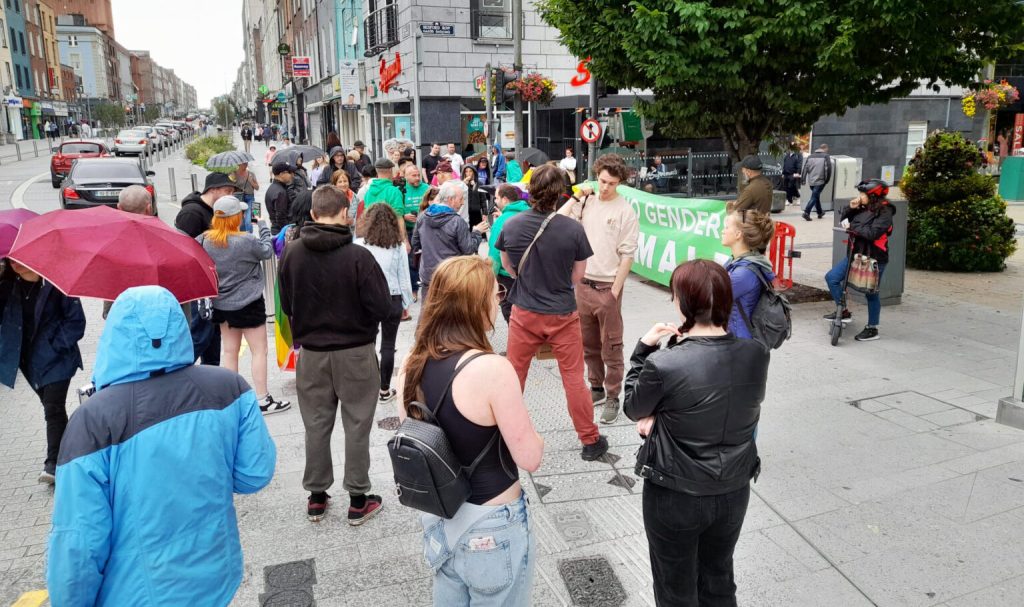
Housing, Refugees and the Far Right Ireland
Councillor John Lyons has seen first hand how the government has given an opportunity to the far right in Ireland by it’s approach to housing and refugees. As he explains:
“The Government’s failure to properly plan for the increase in people seeking safety from the war in Ukraine over the past year, in addition to its abject and racist approach to accommodating people seeking safety from other parts of the world over the past two decades, combined with a domestic housing crisis disgracefully heading into its tenth year, is providing fertile ground for the far-right to exploit.
“What unites all three issues is the political ideology of the centre of Irish politics, as exemplified by Fine Gael and Fianna Fáil, which is firmly committed to the belief that anything to do with shelter/housing/property should be delivered by profit-hungry private sector developers, speculators, vultures and other business types: the delivery of social housing has been part-privatised; Direct Provision, a nationwide system of remotely located centres of incarceration, are operated on a for-profit basis by private companies; and significant numbers of Ukrainian refugees are living in privately-run hotels.
“In 2016, when the number of families without a home in the Dublin region alone stood at 993, including 2,020 homeless children, the Fine Gael-led government effectively committed to ending homelessness. Seven years later, the number of families currently homeless stands at 1,313, with 2,841 homeless children. And these “official” figures grossly underestimate the real levels of homelessness.
“The pace of social housing provision has been shamefully slow, the overreliance on private developers to deliver social homes resulted in 73% of all new social homes delivered in 2022 being purchased by Local Authorities and Approved Housing Bodies from private developers. The 42 acres of public land on the Oscar Traynor Road gifted to a private developer remains undeveloped despite Dublin City Council plans to deliver housing on the site first emerging in 2015. This is causing so much frustration, stress and anxiety for so many people and families who are left living in the insecure private rental market, in overcrowded family homes or in the institutional-style homeless family hubs waiting years for the council to reach them with an offer of accommodation.
“In 2021, the Fine Gael-Fianna Fáil-Green Party government committed to phasing out Direct Provision by 2024 but what we find now is government policy perpetuating this horrible system of incarceration. Indeed, the system has collapsed as volunteer homeless groups discovered in Autumn 2022 as many people from Afghanistan and other places ended up visiting soup runs outside the GPO as the International Protection Office had no accommodation for them. Grassroots community housing activists stepped in on several occasions to help the people seeking asylum who had been left to live on the streets of Dublin, as they have been helping others forced to sleep rough or live in homeless shelters for the last number of years.
“And the government had committed in 2022 to providing 700 modular homes for people had fled the war in Ukraine, but a year later we find that up to 350 of the units won’t be ready until the end of 2023.
“The challenges posed by all three issues – the urgent need to end the domestic housing crisis, our obligations to ensure that people seeking asylum and those fleeing the war in Ukraine are treated fairly, with respect and provided with suitable accommodation – will not be met with more of the same ad-hoc approach to housing we have seen for years. The state can, and should, intervene to ensure that everyone presently living in the Republic; people recently arrived; and the many more who will come to our shores in the near future; have a decent place to call home. The state has the resources to do it but currently refuses to intervene. This refusal is causing untold misery and hardship for tens of thousands of people and is providing the far-right with the opportunity to exploit people’s frustrations; spread their racist poison; punch down and target vulnerable communities for the problems caused by the Irish political class.”
The purpose of any socialist analysis must be as a companion to action – while the strategies and tactics the radical left might adopt to counter the far-right have not been addressed here, it is hoped that this analysis can contribute to the active struggle against the rise of the far-right, and in particular its ability to become electorally viable. Undoubtedly such an anti-fascist programme and practice will only be successful if it grows organically from struggle within working class communities in positive interaction with analysis
For an excellent guide to how to respond to far right activity in your locality, see the Hope and Courage Collective publication, Greater than Fear.





